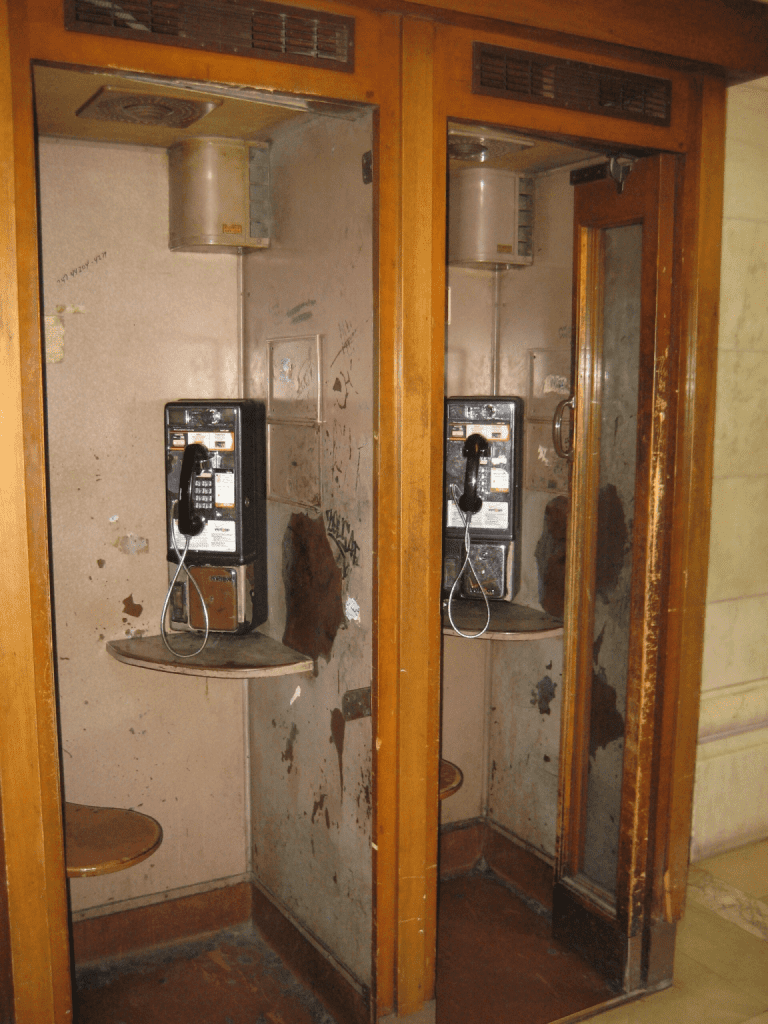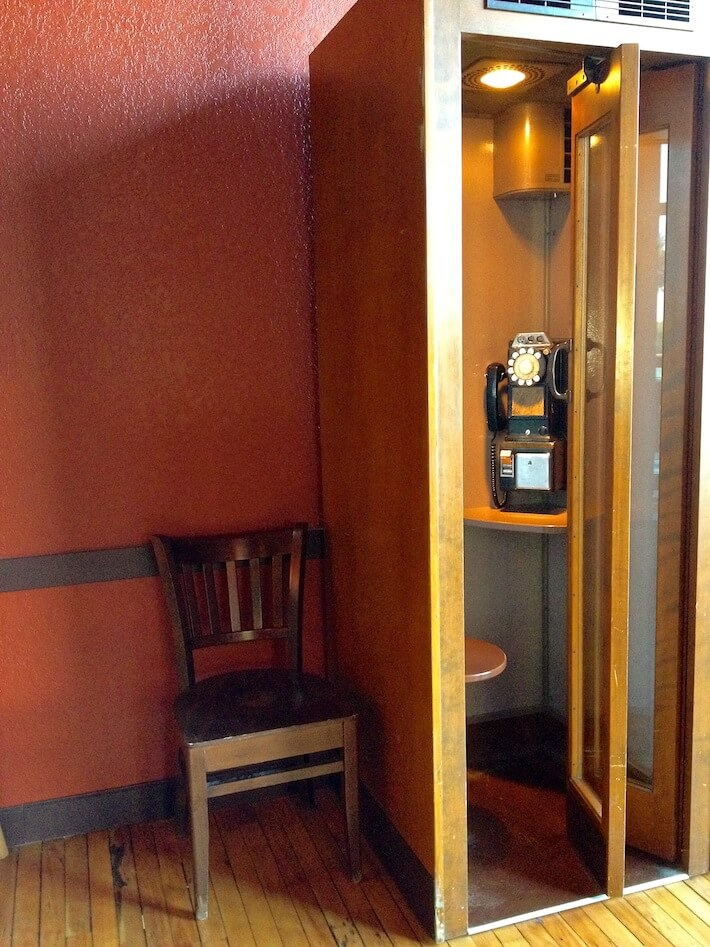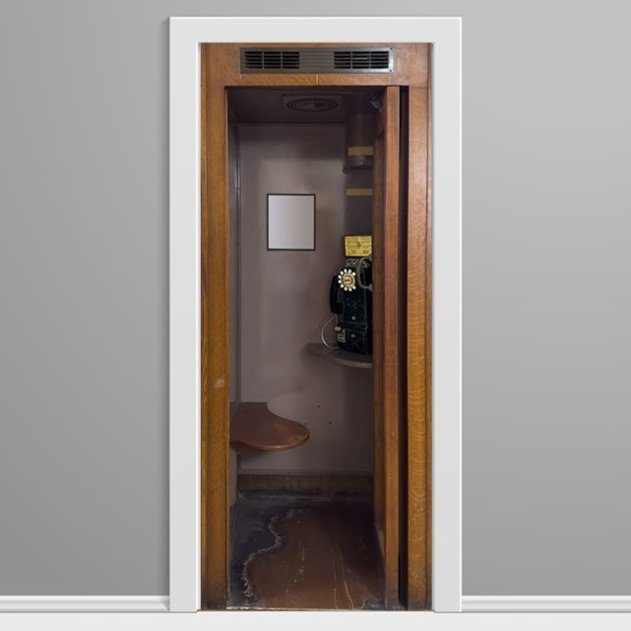At a time when smartphones didn’t exist and communication wasn’t just a click away, there was a place that college students from the ‘60s, ‘70s, and ‘80s relied on: the phone booth. These tiny, enclosed spaces were scattered across campuses, especially in dormitories, serving as the only link between students and the outside world. The phone booth wasn’t just a device for communication; it was a personal escape, a quiet place where students could connect with family and friends without the noise and chaos of dorm life.

The Importance of the Phone Booth in College Life
Imagine standing in front of an old dormitory today. You might notice odd, tucked-away spaces with a light above and perhaps a small shelf—remnants of what used to be phone booths. For college students of earlier decades, these booths were essential for keeping in touch with their families and friends. In an era when cell phones didn’t exist, these booths were the only way students could reach out to loved ones.
Public payphones were widespread, but phone booths offered something extra: privacy. Dormitories were often crowded and noisy, full of distractions. These booths provided students with a rare, quiet space where they could speak without being interrupted. The significance of these booths went beyond mere utility—they were essential parts of the students’ daily routines.
How the Phone Booth Shaped Campus Communication
During the 1960s and 1970s, the telecommunications industry was in a state of transition. While some households had started installing private phones, payphones remained crucial, especially in places like college dormitories. These booths allowed students, who often lived far from home, to check in with their families or catch up with friends.
For students, the phone booth wasn’t just about making a call; it was a brief escape from the intensity of academic life. The booth’s small, enclosed space, illuminated by a soft overhead light, created a sense of solitude. The act of dialing a number, waiting for the connection, and hearing a familiar voice on the other end brought a comforting pause to an otherwise hectic schedule.
A Private Moment in a Shared World
In most cases, phone booths in dorms were small niches, just big enough to step into, stand against the wall, and make a call. These spaces didn’t always have full doors but still provided just enough seclusion to make the experience feel intimate. In a time when dormitories were bustling with activity, these booths offered students a way to talk without being overheard or disturbed by those passing through the halls.
The overhead light wasn’t just functional—it signaled that someone was inside, briefly separated from the noise and stress of dorm life. In that moment, the phone booth became more than just a utility. It was a place where students could gather their thoughts and connect with the people who mattered most, even if only for a short time.
The Shift to Personal Phones: The Decline of the Phone Booth

As the late 1990s and early 2000s approached, phone booths gradually disappeared from dorms. The rise of cell phones marked a significant shift in how students communicated. No longer did students have to queue up at the booth with spare coins, waiting for their turn to call home. Suddenly, everyone had their own personal phone in their pocket, and the need for a communal phone booth diminished rapidly.
Yet, for decades, the phone booth was much more than a practical device for making calls. It represented an era when communication was more deliberate. Students couldn’t just send a quick text or voicemail; instead, they had to physically walk to the booth, wait their turn, and hope that they could reach someone on the other end. It required patience and effort, a stark contrast to today’s instant messaging culture.
The Symbolism of the Phone Booth in a Changing World
In its prime, the phone booth symbolized the structured nature of communication in the mid-20th century. People had to plan their calls carefully, often checking the time and rationing their coins to make sure they didn’t run out of minutes. While this may seem inconvenient by today’s standards, it also brought a certain joy to the process of speaking with loved ones. The anticipation of hearing a familiar voice, coupled with the knowledge that time was limited, made these conversations all the more meaningful.
The phone booth wasn’t just a place to talk—it was a connection to home and a way for students to feel grounded during their time away. The quiet, muffled sound of voices inside the booth created a sense of intimacy that today’s constant communication often lacks.
Nostalgia and the Legacy of the Phone Booth

Even though the phone booth has largely disappeared from modern campuses, its legacy remains. Today, when people walk by old dormitories, they may still see the niches where phone booths once stood, now relics of a bygone era. These small spaces evoke a sense of nostalgia for a time when making a call was a deliberate and sometimes difficult task.
The act of using a phone booth wasn’t just about communication—it was a ritual. The metallic touch of the payphone, the spinning of the dial, and the wait for the ringing tone on the other end—all of these elements combined to create a tactile, personal experience. While communication today is faster and more convenient, there is something inherently appealing about the slower, more intentional pace of phone booth conversations.
Conclusion: A Glimpse Into the Past
The next time you walk past one of those small, tucked-away spaces in an old dorm, don’t just see it as an outdated structure. Instead, see it for what it once was: a vital lifeline for students of the past, a place where anticipation, connection, and communication all came together. The soft glow of the booth’s light once illuminated students dialing home, eager to hear a familiar voice.
Though phone booths are now largely a memory, they remain a powerful symbol of a time when even the simplest act—making a phone call—was an event to be savored. These small spaces remind us of an era when life was a bit slower, and the effort to connect with someone held a deeper, more personal meaning. The phone booth may be gone, but its legacy of patience, anticipation, and connection lives on in our memories.


